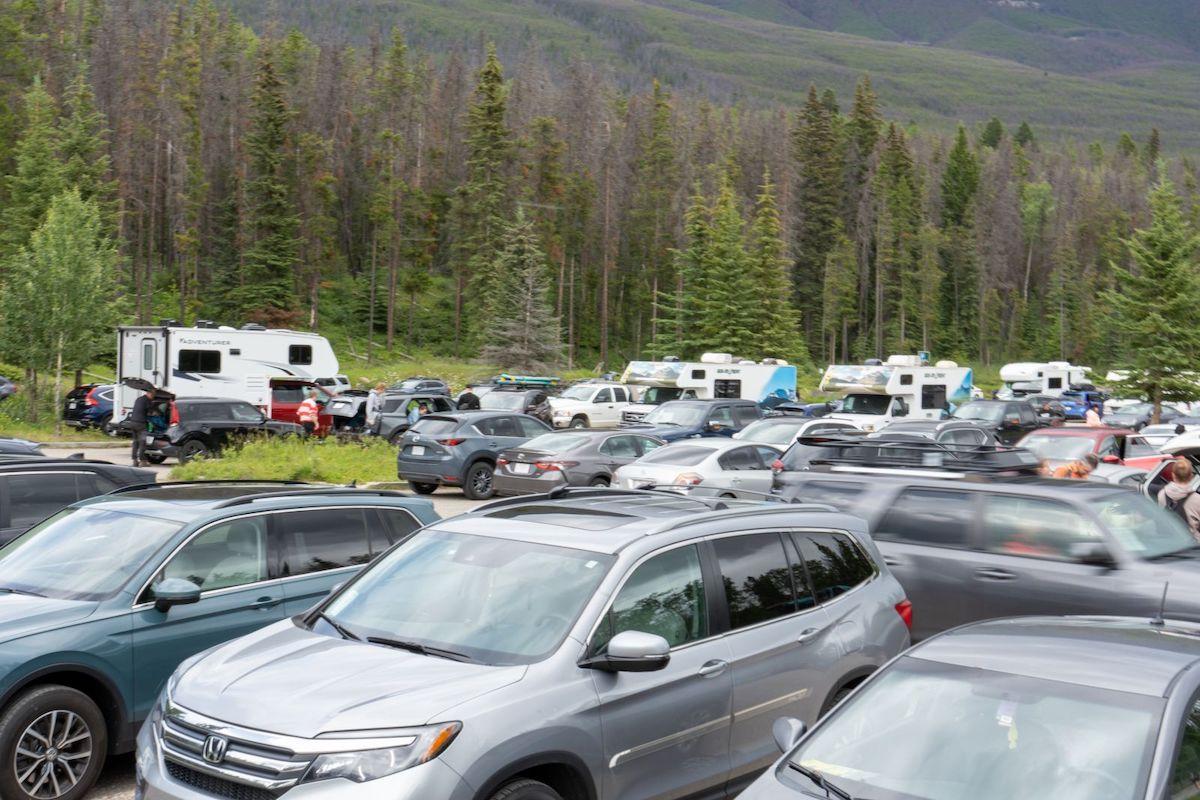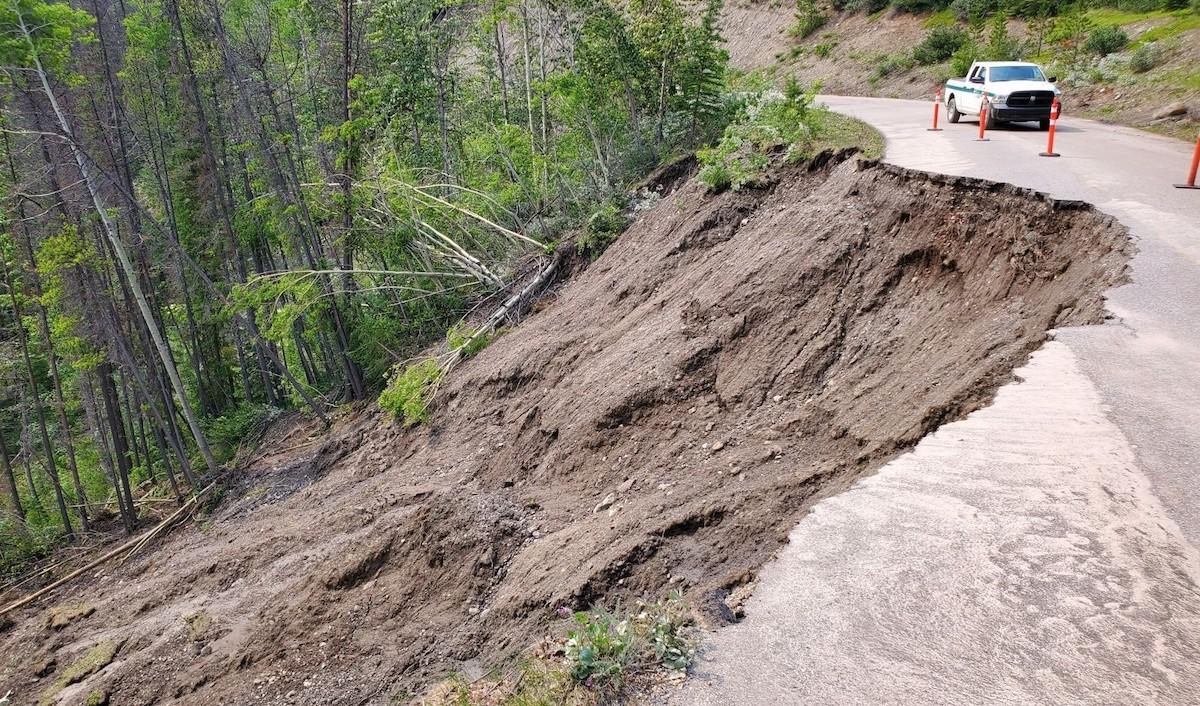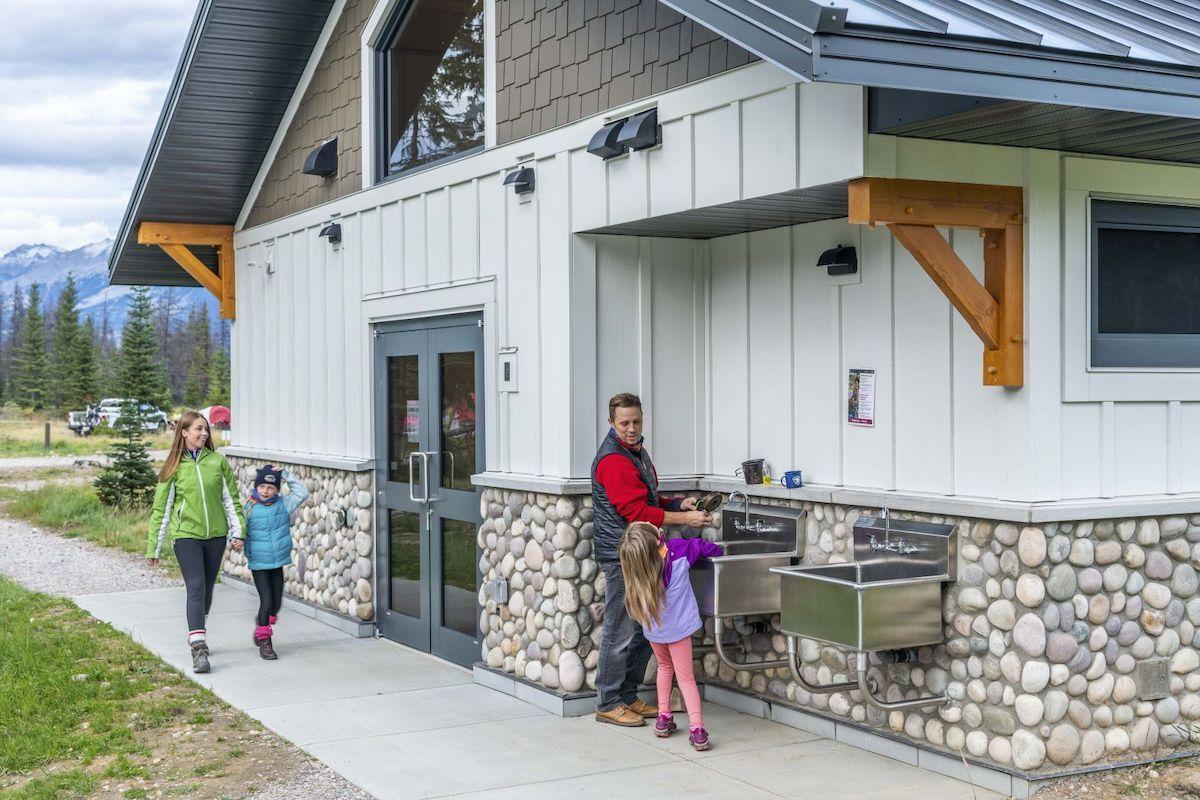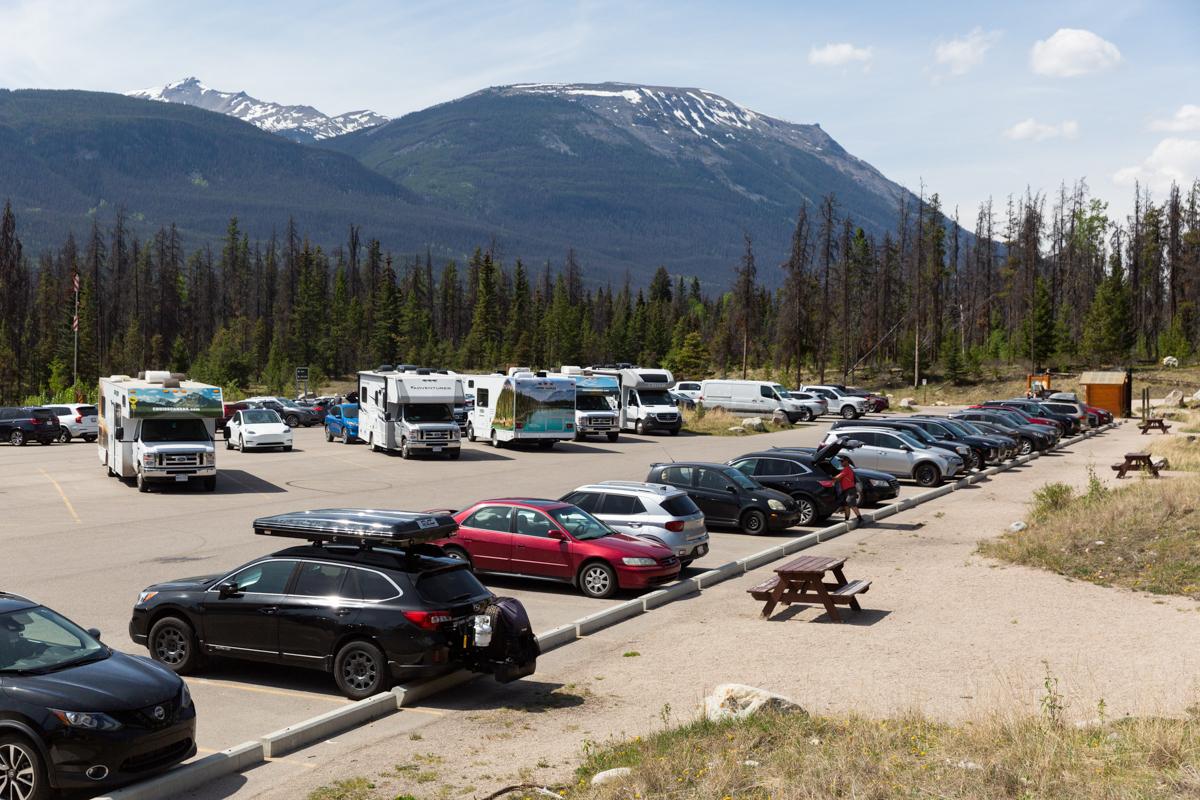
Parking lot congestion is a serious concern at Jasper National Park in summer/Parks Canada, Rachel Castelletti
After a wild June in Alberta that was full of some of the highest and lowest temperatures on record, significant precipitation and snow, Jasper National Park is asking summer visitors to come prepared.
Since more than 1.5 million people travel to the mountain park between June and September, Parks Canada says to “be prepared for crowds and line-ups, remember to pack your patience and be respectful to the people and wildlife you encounter.”
Staff are still cleaning up fallen trees and debris from a significant June 19 storm. Pay attention to closures and warnings, and remain alert. Check current trail conditions before heading out. Plan a trip suitable to your abilities and wear appropriate gear and footwear to navigate around fallen trees.

June's wild weather wreaked havoc on the park and crews are still cleaning up/Parks Canada
To avoid congestion, use JasperNow. This web page includes regular updates on parking capacity at some of the park’s most popular places, plus vacancy updates for campgrounds (including self-registration).
Parking and camping updates use these color categories:
• Green: parking/camping available
• Yellow: parking/camping is nearly full
• Red: parking/camping is full
If parking is full, there are also suggestions to visit other areas nearby, or to use different modes of transportation. To secure a parking spot at one of the park’s popular locations:
• Go early: Arrive well before 10 a.m. and leave before it gets really busy.
• Go late: Visit after 5 p.m. or even later and take in a mountain sunset.
• Have a plan A, B & C: There are many gorgeous places to visit.

Don't even think of winging it when it comes to reservations at Jasper's Whistlers Campground/Parks Canada, Matt Quiring
Good planning makes a great trip.
Don’t come to Jasper without a hotel or camping reservation (and remember that camping in a non-designated campsite or in the town of Jasper is illegal). During most long weekends and summer months, the park is at capacity. If there is no availability in Jasper, look into accommodations in a neighboring community such as Hinton, Folding Mountain or Valemount.
To avoid parking lot congestion, BYOB (bring your own bike) — or rent one in Jasper to take advantage of the family-friendly connector trail systems. Trails go to Lake Edith, Lake Annette and Pyramid Beach, popular locations within biking distance of Whistlers/Wapiti Campgrounds and town.
Use updated on-site wayfinding to navigate the trail network. If you are biking from Whistlers or Wapiti Campground, take the Campgrounds Trail (Trail #12) to town. To connect to the beaches (Lake Edith and Annette), branch off the Campgrounds Trail and on to the Lakes Loop (Trail 14 to Trail 18).
Pack and be prepared for the elements. Check the trail report, be aware of visitor safety guidelines, pack snacks and water, take your time and enjoy the scenery. Get the most up-to-date road conditions by visiting 511Alberta or Drive BC.

RV users should plan where they can park in Jasper National Park/Parks Canada, Luuk Wijk
If you’re visiting with an RV or trailer, know where you can go and park. Many roads and day-use areas can accommodate extra-long rides, but other areas can be tight.
The roomiest parking lots to accommodate RVs/trailers are:
• Maligne Canyon (use the Maligne Overlook pull-through stalls)
• Valley of the Five Lakes
• Athabasca Falls
Areas if your RV/vehicle and trailer is 7.5 metres (25 feet) or shorter:
• Cavell Day-use Area (Cavell Road also has a trailer drop off area at the beginning of the road)
• Maligne Lake Day-use Area
Areas where RV/trailer access is not permitted:
• Lake Annette/Lake Edith
• Lac Beauvert Road
• Pyramid Beach Road
• Wilcox Pass Trailhead
Visit JasperNow to view the status on your plan A and plan B destinations before you head out.
Remember to always give wildlife space. You are in the home of many wild animals so respect their space, never feed them and always carry bear spray and know how to use it. Dogs must always be on a leash and under control. Abide by all speed limits, drive carefully and be alert. Learn how to view wildlife safely and avoid a negative encounter. Report any interactions with wildlife, concerning wildlife activity or dead animals to Parks Canada Dispatch 24 hours a day at 1-780-852-6155.
Finally, leave drones at home. Flying a drone in a national park is prohibited and can lead to a fine of up to $25,000 (about $19,000 USD). Consider hiking and putting the work into getting the best views atop a mountain. For a quick and steep ascent with incredible views of town, try Old Fort Point.
For more questions, stop in at the Jasper National Park Visitor Information Centre or the Parks Canada information desk at the Icefield Centre.


